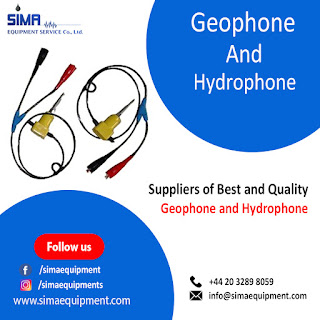Understanding Seismic Equipment: The Role of Geophones and Hydrophones
Seismic equipment is critical for oil and gas exploration, geological
surveys, and earthquake monitoring. The equipment includes geophones and
hydrophones, which detect and record vibrations in the ground and water,
respectively. In this article, we will explore the role of seismic equipment in
detail and how geophones and hydrophones play a vital part in the
process.
What is Seismic Equipment?
Seismic equipment refers to the tools and instruments used to detect, measure, and
analyze the vibrations or seismic waves in the earth's surface or water. The
equipment can be used for various purposes, such as:
- Oil and Gas Exploration: Seismic equipment is widely used in the oil and gas industry to locate and estimate the size and depth of underground reservoirs.
- Geological Surveys: Seismic equipment is used in geological surveys to map the subsurface structure of the earth's crust and identify potential natural resources.
- Earthquake Monitoring:
Seismic equipment
monitors earthquake activity and predicts seismic events.
How does Seismic Equipment Work?
Seismic equipment typically consists of a source that generates seismic waves, a receiver
that records the waves, and a computer that processes the data. The seismic
waves generated by the source travel through the earth's surface or water and
bounce back when they encounter different rock or sediment layers. Depending on
the measured medium, these waves are then recorded by the receiver, which can
be a geophone or a hydrophone.
The Role of Geophones:
A geophone is a device that detects seismic waves in the ground. It
consists of a coil of wire and a magnet, which move relative to each other when
seismic waves pass. This movement generates an electrical signal, which is then
recorded by the receiver. Geophones are commonly used in oil and gas
exploration and earthquake monitoring. They can detect seismic waves with
frequencies ranging from a few hertz to several kilohertz.
The Role of Hydrophones:
A hydrophone is a device that detects seismic waves in water. It works
on the same principle as a geophone, but instead of detecting vibrations in the
ground, it detects vibrations in the water. Hydrophones are commonly used in
marine seismic surveys to map the seafloor and locate oil and gas reserves.
They can detect seismic waves with frequencies ranging from a few hertz to
several kilohertz.
Advancements in Seismic Equipment:
In recent years, there have been significant advancements in seismic equipment technology. For example,
wireless geophones have made seismic surveys faster and more efficient.
Wireless geophones eliminate the need for cables and allow data to be
transmitted in real-time, reducing the time and cost of the survey.
Another advancement is using multi-component geophones, which can
measure both seismic waves' vertical and horizontal components. This allows for
a more accurate and detailed mapping of subsurface structures.
In conclusion, Seismic equipment, including geophones and
hydrophones, plays a vital role in various industries, such as oil and gas
exploration, geological surveys, and earthquake monitoring. Understanding how
this equipment works and its role in the exploration process is crucial for
anyone involved in these industries. With continued advancements in technology,
seismic equipment is likely to become even more efficient and effective in the
future.

.jpg)


Comments
Post a Comment